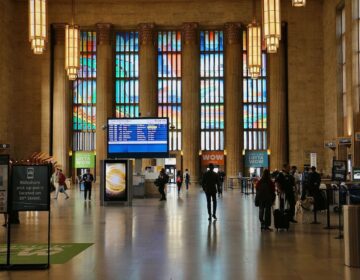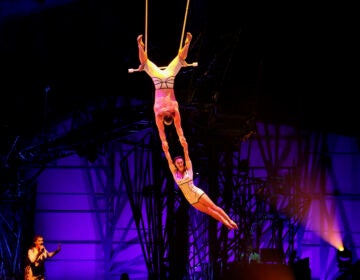SEPTA reopens its underground oculus, for daydreaming
“Philly Daydreaming” is a systemwide art installation profiling SEPTA drivers and riders. The centerpiece is an underground “spaceship.”
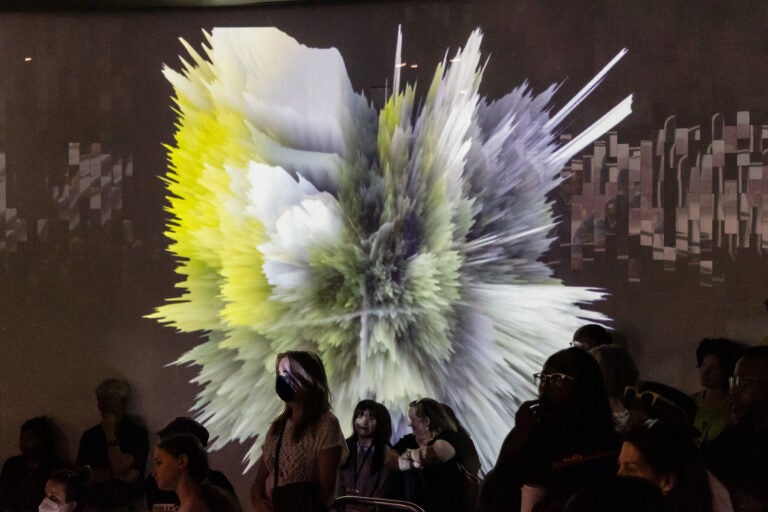
Philly Daydreams, a film project and photo installation on Philadelphia public transit, opened with an event at the oculus in the SEPTA’s City Hall concourse on October 5, 2023. (Kimberly Paynter/WHYY)
From Philly and the Pa. suburbs to South Jersey and Delaware, what would you like WHYY News to cover? Let us know!
Beneath the surface of Dilworth Plaza, outside Philadelphia City Hall, is an oculus: a circular underground room that once had a portal to the sky. The room has been closed to the public for more than three years but will temporarily open for dreaming.
Filmmaker Anula Shetty toured the SEPTA concourse looking for spaces for her immersive video art installation, “Philly Daydreams: Stories in Transit.” When SEPTA officials unlocked the oculus for her, it felt like a spaceship.
“I love circles. I love the idea of expanding space and looking up into the sky,” Shetty said. “The oculus gives you that.”
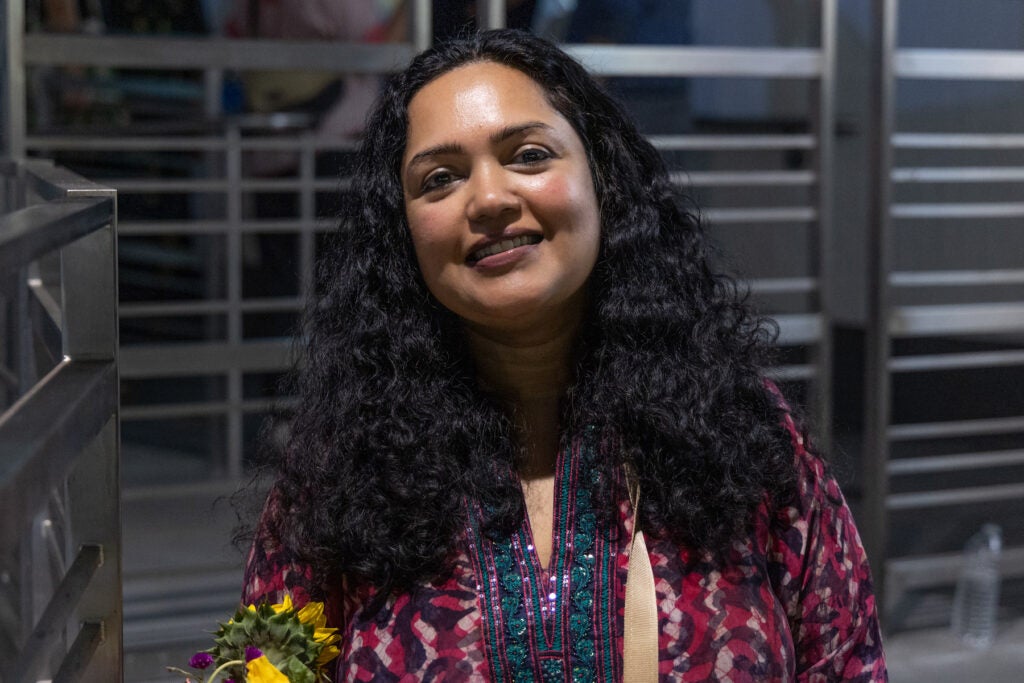
“You can almost see Captain Kirk there in his chair,” said Kim Heinle, SEPTA’s assistant chief operating officer for programs.
Shetty has created a series of 14 short documentary film portraits of SEPTA employees and riders, which are now accessible system-wide via digital QR codes posted on buses, trains, and trolleys.
“Philly Daydreams,” a project of SEPTA, Mural Arts Philadelphia, and the Forman Arts Initiative, leverages the common phenomenon of letting one’s mind wander while riding public transportation to foster feelings of community.
“People get onto the SEPTA bus, and you don’t really think about the driver. You don’t think about who cleans the subway stations,” Shetty said. “Stories are the ways that we can connect to each other. These are the people I want to hear from.”
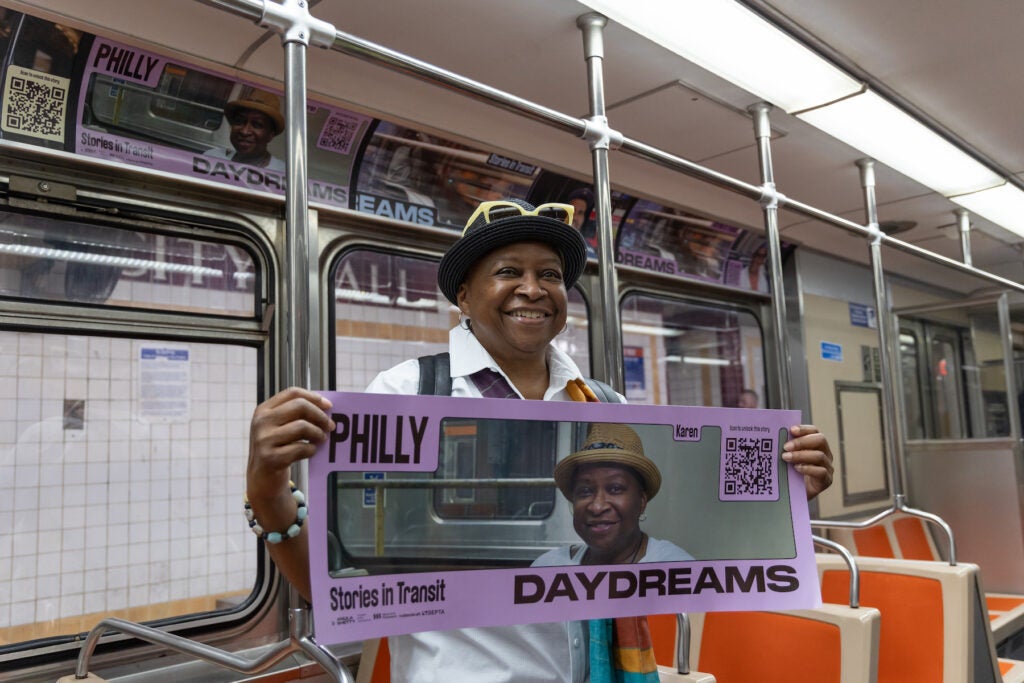
One featured bus driver, Lovey McIntosh, said she feels like a “superhero” for taking care of passengers, getting them to work, school, or doctor’s appointments safely and on time. A trolley driver named Tracy makes a heart shape with her fingers: “I like to show love to everybody,” she said. “I blow kisses out to everybody.”
“I’m a first generation immigrant,” said Shetty, who grew up in Mumbai. She came to Philadelphia to study film at Temple University and has lived here for about 20 years.
“For me, being on the train takes me back to that feeling of being between destinations,” she said. “One of the fascinating things about Philadelphia is all the different neighborhoods. I really wanted to highlight some of the immigrant neighborhoods. I decided to go with community leaders who could talk about that immigrant experience, what it feels like to be in transit.”
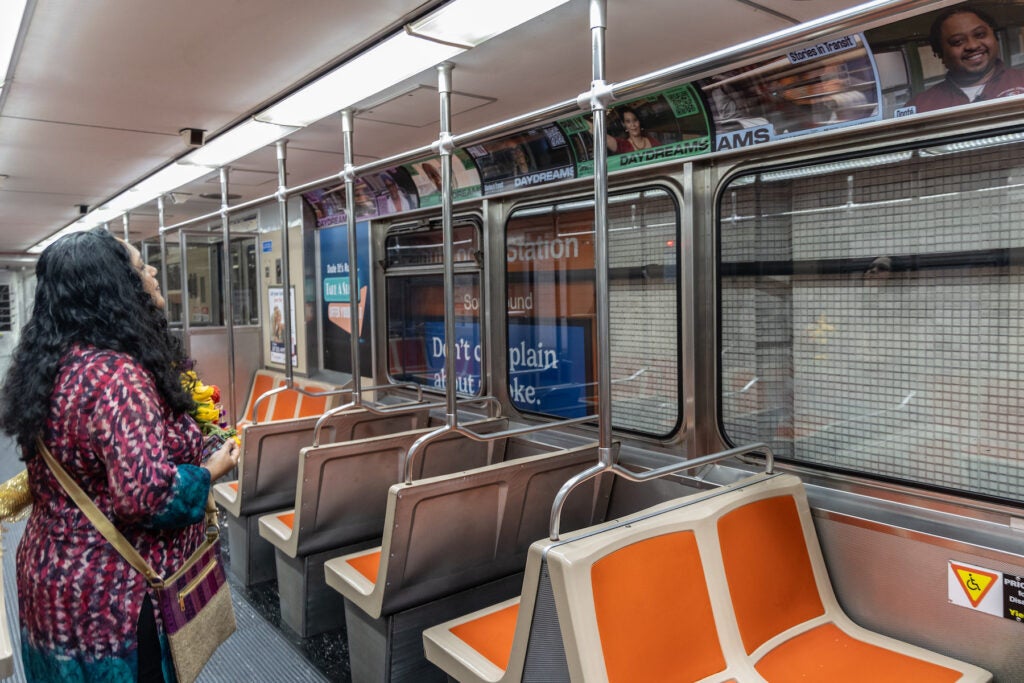
One of the subjects Shetty profiled is Iris Brown, a longtime volunteer with the Norris Square Neighborhood Project in North Philadelphia, who grew up in Loiza, Puerto Rico, a small town on the northeastern coast. She said she likes to select a window seat on the bus so she can watch the neighborhoods passing by while keeping an ear on her fellow passengers.
“I like to listen to the many, many languages,” Brown said. “If they are talking in a different language, their accent — to me — sounds like beauty.”
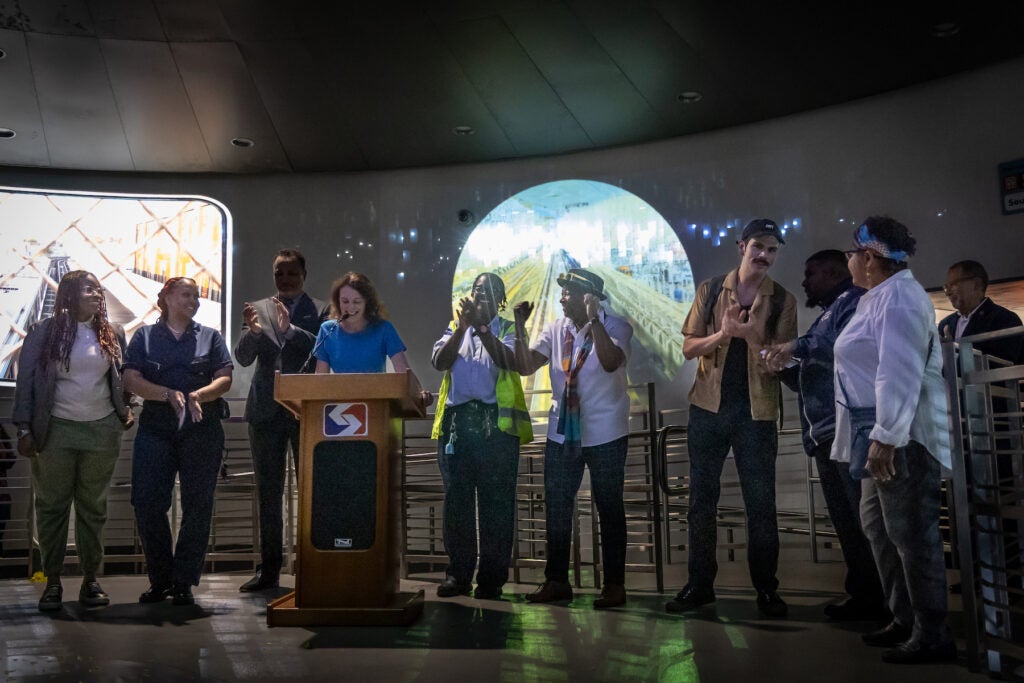
The films will be accessible through QR codes posted on all modes of SEPTA transportation through the end of November. They are also streamable from anywhere on Mural Arts’ Vimeo page.
The centerpiece of the project is the immersive video installation inside the oculus, where all of the films will be projected in a loop. In the darkened room, that loop is accompanied by abstract video projections on the rounded walls.
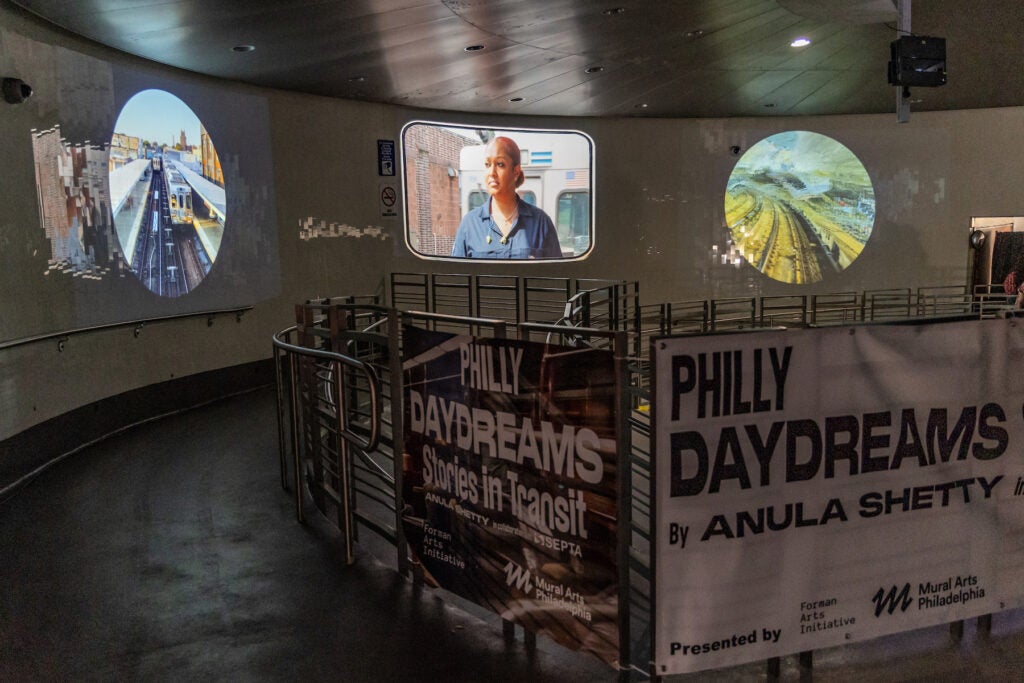
Jennifer Rice, co-founder of the Forman Arts Initiative, said at first she could not envision what Shetty was proposing, but is deeply impressed by the results.
“I’ve been standing over there and watching this particular screen, an underground subway tunnel, and it’s beautiful,” Rice said at the opening. “ I love that Anula found these spaces that most people would not consider beautiful, and shown the beauty in them.”
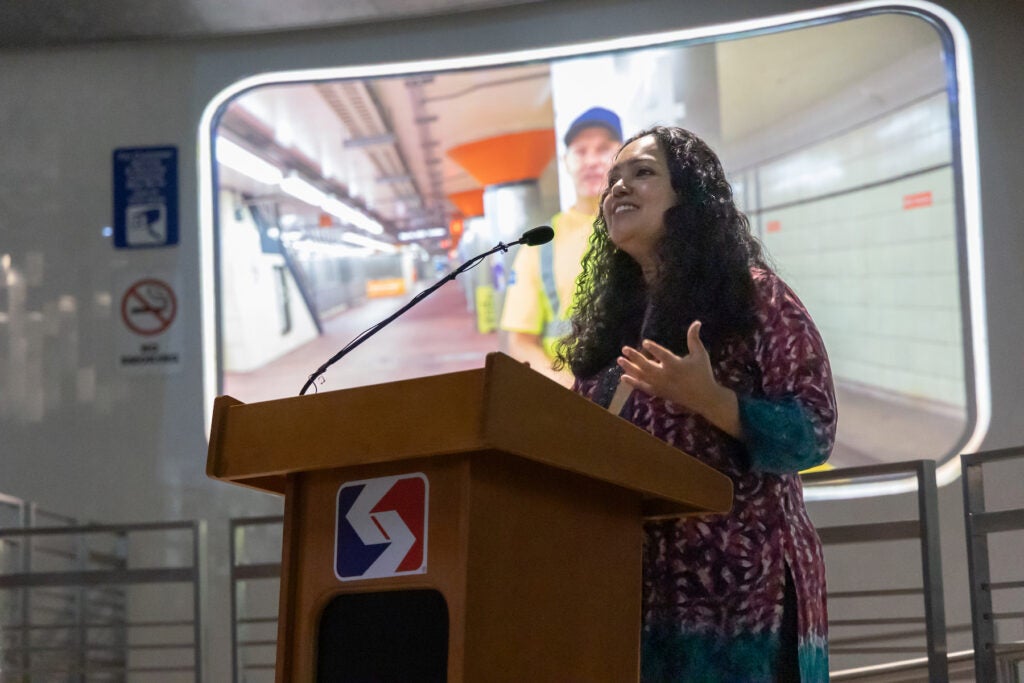
“At the end of the day, we hope this project may spark conversations and exchange among riders while bringing levity and joy to their daily commutes,” she said.
The oculus, which is still closed to the public, will be open during select days for the next two weeks: Friday, Oct. 6 from 11 a.m. – 2 p.m., and Saturday, Oct. 7 from 1 p.m. – 4 p.m.
Then, next Thursday and Friday, Oct. 12 and 13, from 11 a.m. – 2 p.m., and Saturday and Sunday, Oct 14 and 15, from 1 p.m. – 4 p.m.
The oculus was rebuilt in 2018 as part of a $10 million phase of SEPTA’s multi-year renovation of the entire Center City concourse. But it only stayed open for two years: In 2020 it closed during the pandemic.
Due to a sharply declining ridership during the pandemic, parts of the SEPTA concourse that were hardly used by passengers, such as the South Broad Concourse and the oculus, were shut down out of caution.
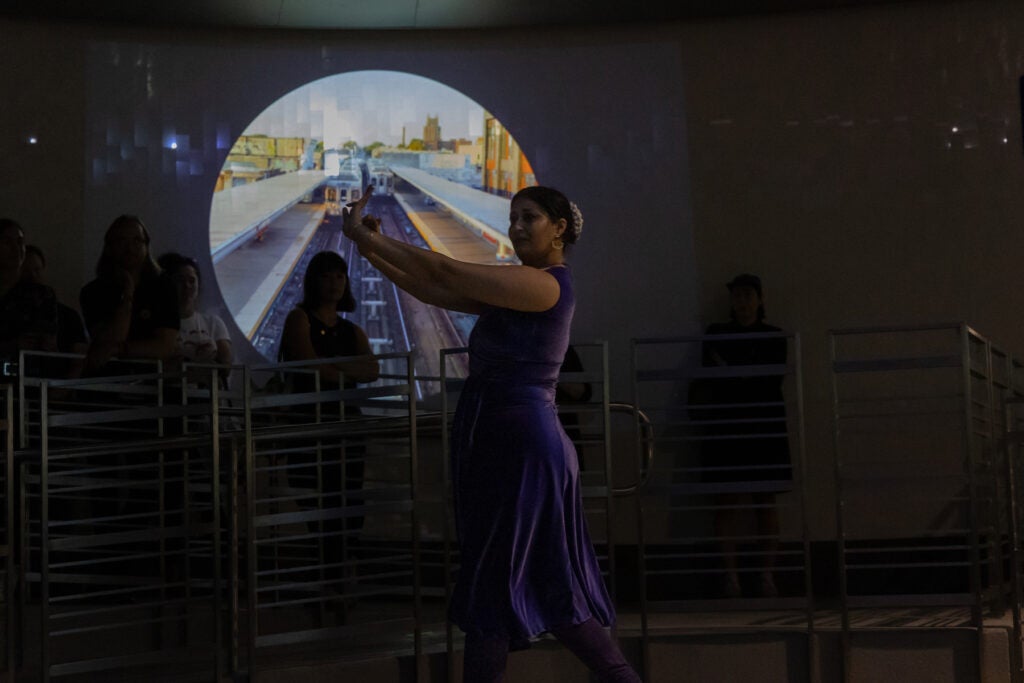
“I guess you could say it’s mothballed, but it does not mean that it’s not coming back,” Heinle said. “We fully intend to bring it back when there’s enough traffic down there, where we have the resources to maintain it and make sure it’s secure. This art exhibit is a step in that direction.”
Heinle said SEPTA intends to have large parts of the underground concourse renovated and opened by 2026, when the city is expecting an influx of visitors to the nation’s semiquincentennial celebrations and the World Cup soccer games.

Saturdays just got more interesting.
WHYY is your source for fact-based, in-depth journalism and information. As a nonprofit organization, we rely on financial support from readers like you. Please give today.



